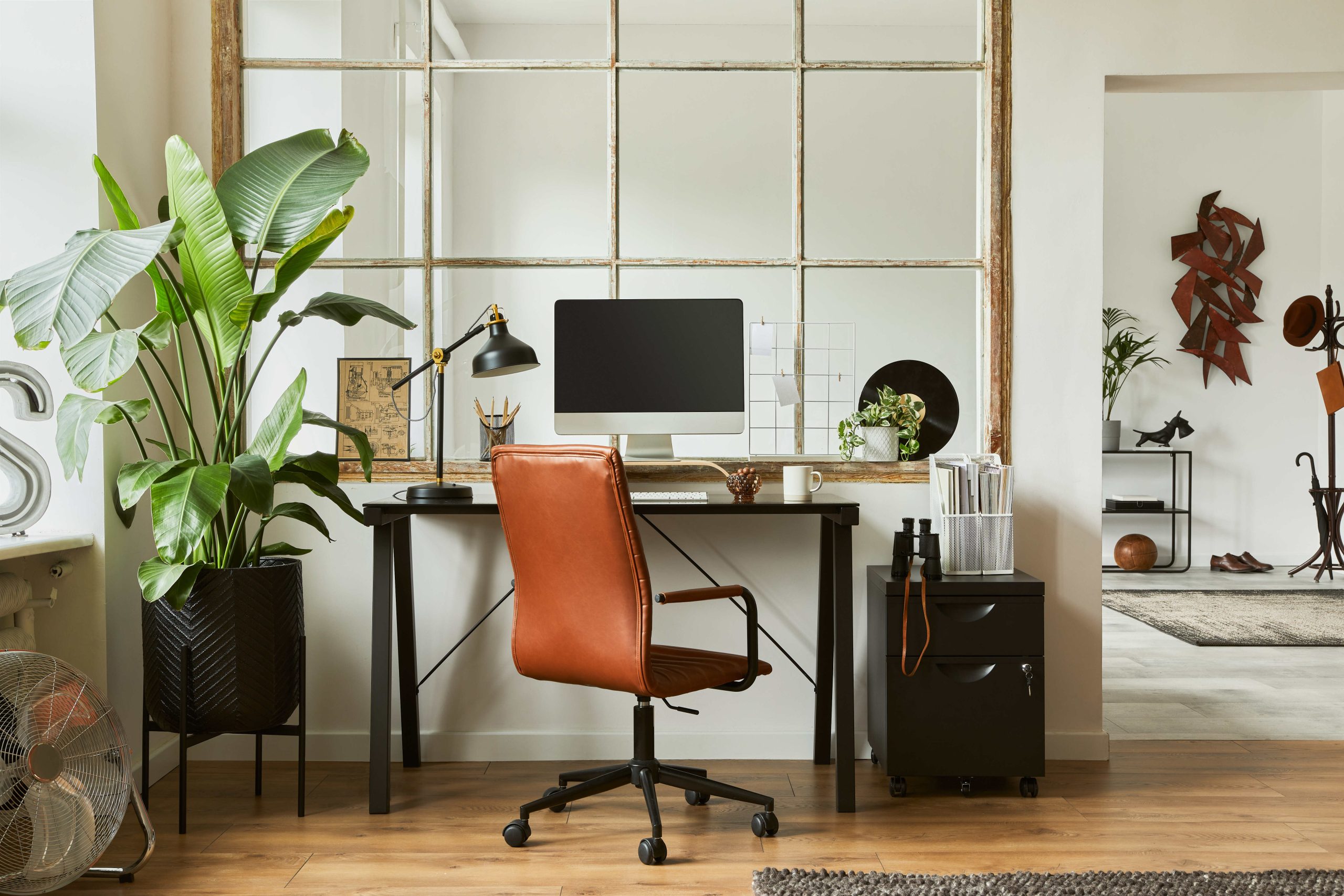As remote work becomes more common, having a well-designed home office is essential for maintaining productivity and well-being. A functional home office isn’t just about a desk and a chair; it’s about creating a space that supports your work habits, minimizes distractions, and helps you maintain a healthy work-life balance. Here’s a guide to setting up a productive home office that promotes both efficiency and comfort.

Benefits of a Morning Routine
The first step in creating a productive home office is choosing the right location. Ideally, your workspace should be in a quiet area of your home, away from high-traffic zones like the kitchen or living room. If possible, select a room with a door that you can close to signal the start and end of your workday and minimize interruptions. If you don’t have a separate room, carve out a dedicated workspace in a quiet corner, using room dividers or furniture to create a distinct boundary between your work area and the rest of your home.
Your location should also have access to natural light, which can significantly boost your mood and energy levels. Position your desk near a window if possible, but avoid placing it directly in front of a window to reduce glare on your computer screen. Natural light can help regulate your circadian rhythms, making you more alert during the day and improving your sleep at night.
Invest in Ergonomic Furniture
Ergonomic furniture is crucial for maintaining comfort and preventing strain during long hours of work. A good office chair with adjustable height, lumbar support, and armrests can make a big difference in your comfort and posture. Your chair should allow you to sit with your feet flat on the floor, knees at a 90-degree angle, and back straight. An ergonomic desk, preferably one with adjustable height, can help you switch between sitting and standing throughout the day, reducing the risk of back pain and other issues associated with prolonged sitting.
In addition to a chair and desk, consider using an ergonomic keyboard and mouse to prevent wrist strain. A monitor stand or adjustable monitor arm can position your screen at eye level, reducing neck strain and helping you maintain a healthy posture. Remember, your comfort directly impacts your productivity, so investing in ergonomic furniture is a wise choice for long-term health and efficiency.
Optimize Your Desk Setup
An organized and efficient desk setup is essential for maintaining focus and productivity. Start by decluttering your desk, removing any unnecessary items that can distract you or create a chaotic environment. Keep only the essentials on your desk, such as your computer, a notepad, and a few office supplies. Use desk organizers, trays, or drawers to keep everything in its place and easily accessible.
Cable management is another important aspect of an optimized desk setup. Tangled cables can create a mess and make your workspace feel cluttered. Use cable ties, clips, or a cable management box to keep your cords organized and out of sight. A clean and organized desk not only looks better but also helps reduce stress and improve your ability to focus.
Incorporate Personal Touches
While functionality is key in a home office, adding personal touches can make your workspace more inviting and inspiring. Incorporate elements that reflect your personality and make you feel comfortable, such as artwork, plants, or a favorite mug. Plants, in particular, can improve air quality and add a touch of nature to your workspace, which can boost your mood and creativity.
Personal touches also help create a space where you enjoy spending time. When your workspace feels like your own, you’re more likely to feel motivated and engaged in your work. Just be mindful not to over-decorate—keep your space simple and uncluttered to maintain focus and productivity.
Ensure Proper Lighting
Lighting plays a significant role in creating a productive home office. Poor lighting can cause eye strain, headaches, and fatigue, all of which can hinder your productivity. To create a well-lit workspace, combine natural light with task lighting and ambient lighting. A desk lamp with adjustable brightness is ideal for focused tasks, while soft, ambient lighting can create a warm and comfortable atmosphere.
Avoid harsh, overhead lighting that can cast shadows or create glare on your screen. Instead, opt for lighting that illuminates your workspace evenly. Consider using LED bulbs, which are energy-efficient and offer a range of color temperatures to suit your preferences. Proper lighting not only enhances your comfort but also contributes to a more professional and polished home office environment.
Create a Work-Life Boundary
One of the challenges of working from home is maintaining a clear boundary between work and personal life. Without a physical separation, it’s easy for work to spill over into your personal time, leading to burnout. To create a work-life boundary, establish a routine that signals the start and end of your workday. This could be as simple as shutting down your computer at a specific time, closing the door to your office, or changing into different clothes at the end of the day.
In addition to a routine, set clear boundaries with family members or roommates. Let them know your work hours and when you’re available for interruptions. Creating a designated workspace also reinforces this boundary, helping you mentally separate work from leisure time. By maintaining a clear work-life boundary, you can reduce stress and improve your overall well-being.
Utilize Organization Tools
Staying organized is key to maintaining productivity in your home office. Use organization tools like filing cabinets, shelves, or storage bins to keep your documents and supplies in order. Digital organization tools, such as project management software or cloud storage, can also help you stay on top of tasks and keep your files easily accessible.
Labeling is another effective way to stay organized. Label your files, drawers, and storage boxes to make finding items quick and easy. Regularly declutter and reassess your organization system to ensure it continues to meet your needs. An organized workspace not only saves time but also reduces the mental clutter that can impede your productivity.
Prioritize Comfort and Health
Comfort and health should be top priorities in your home office setup. In addition to ergonomic furniture, consider other factors that contribute to your physical well-being, such as room temperature, air quality, and noise levels. A comfortable room temperature and good ventilation are essential for staying focused and comfortable throughout the day.
If noise is a problem, consider using noise-canceling headphones or a white noise machine to block out distractions. Taking regular breaks to stretch, walk around, or simply rest your eyes is also important for maintaining your health and preventing fatigue. By prioritizing your comfort and health, you can create a home office environment that supports sustained productivity and well-being.
Establish a Routine
Finally, establishing a consistent routine can help you maximize productivity and maintain a healthy work-life balance. Start your day with a morning routine that prepares you mentally and physically for work. This could include exercise, meditation, or simply enjoying a cup of coffee. Set specific work hours and stick to them as much as possible, taking regular breaks to recharge.
At the end of the day, follow a routine that helps you transition from work to personal time. This might involve tidying up your workspace, reviewing your accomplishments, or setting goals for the next day. A routine not only helps you stay on track but also reinforces the separation between work and home life, making it easier to unwind and relax after a productive day.
Key Takeaways
Creating a productive home office is about more than just aesthetics—it’s about designing a space that supports your work habits, promotes comfort, and helps you maintain a healthy work-life balance. By choosing the right location, investing in ergonomic furniture, and incorporating personal touches, you can create a workspace that enhances your productivity and well-being. Remember to establish a routine, set boundaries, and prioritize your health to ensure that your home office remains a place where you can thrive.





